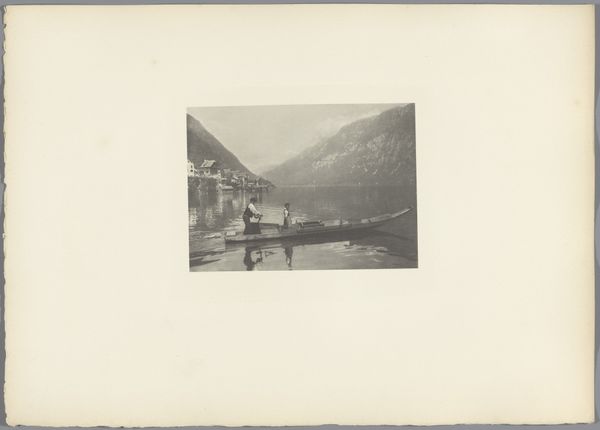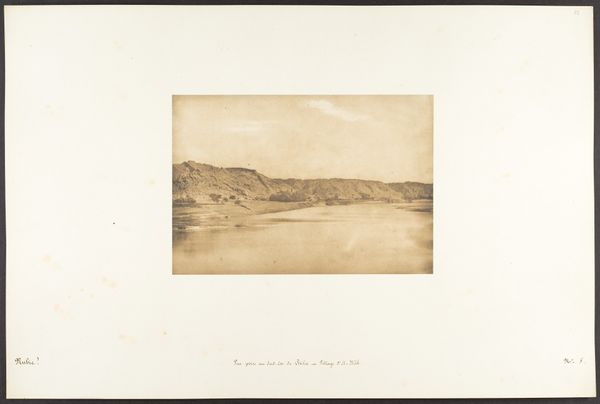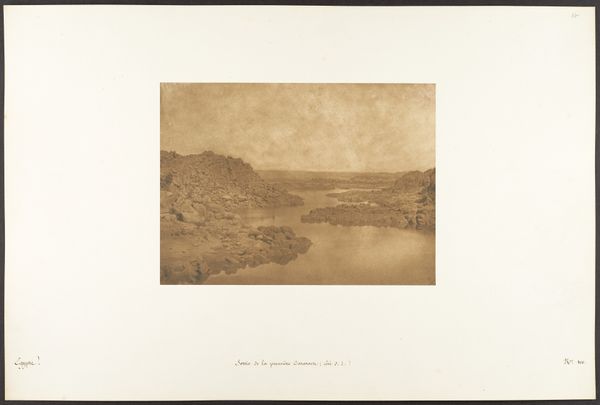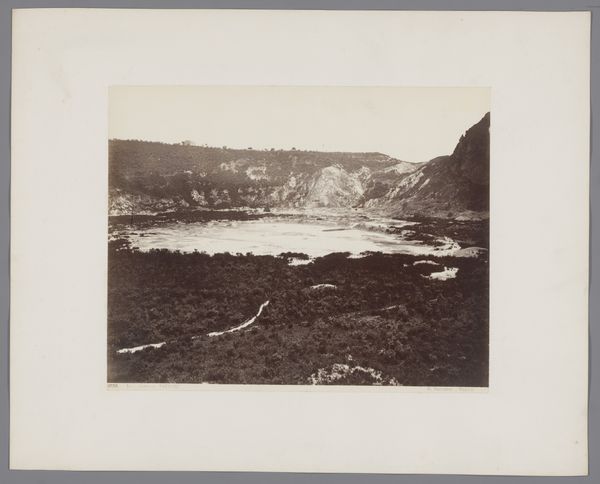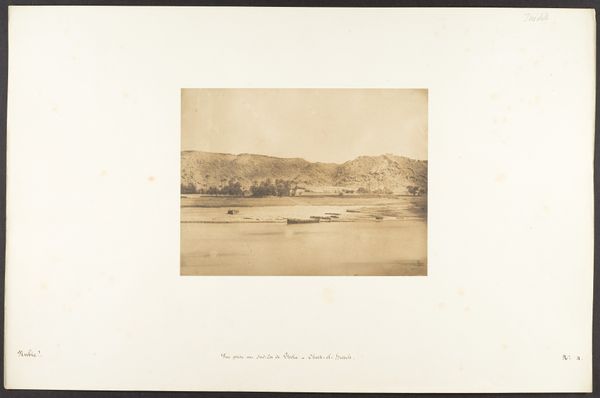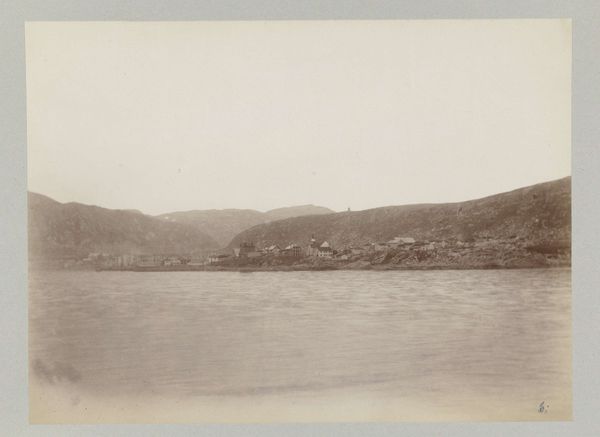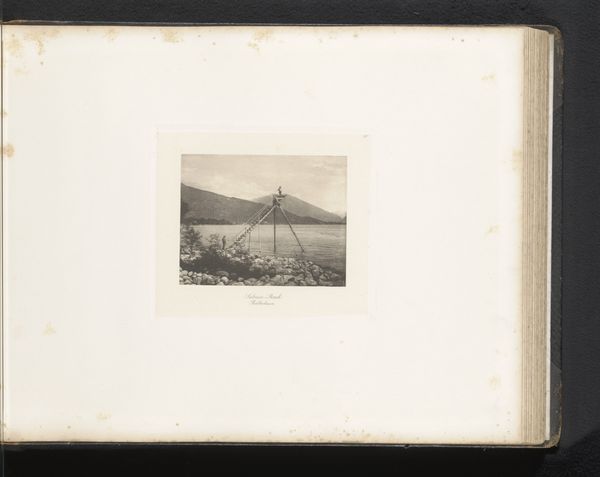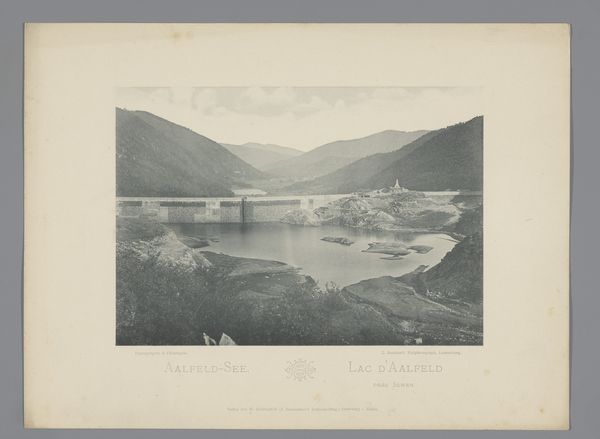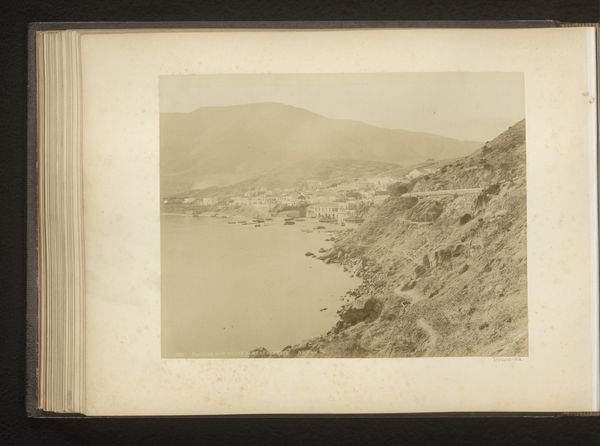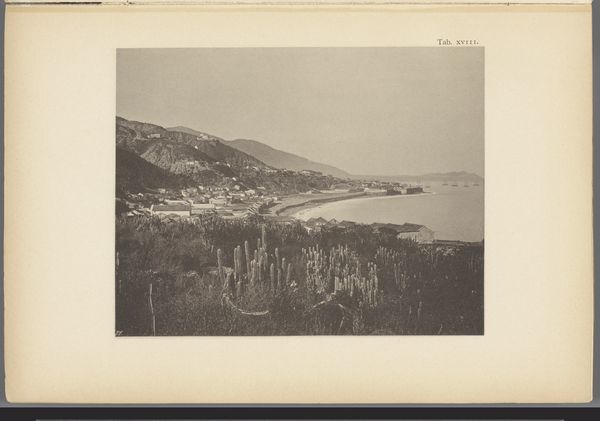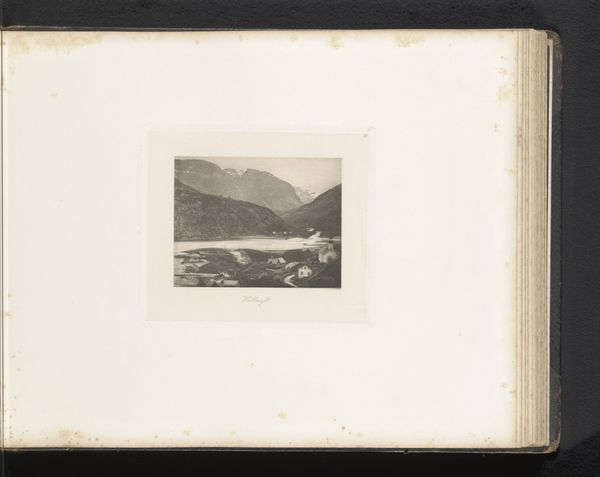
photography, gelatin-silver-print
#
16_19th-century
#
pictorialism
#
landscape
#
photography
#
gelatin-silver-print
#
watercolor
#
realism
Dimensions: height 140 mm, width 182 mm, height 304 mm, width 375 mm
Copyright: Rijks Museum: Open Domain
Curator: This gelatin silver print by Knud Knudsen, titled "Parti fra Kongsberg (=Koningsberg), Noorwegen", captures a scene in Norway sometime between 1870 and 1900. The subdued tones give the impression of looking into the past. Editor: My first impression is the dynamism within a muted palette. The cascading water is so fluid and contrasts beautifully with the static, structured architecture on the bank. Curator: That interplay is significant. The buildings and structures along the water's edge speak of human attempts to harness and organize nature. The river, ever flowing, represents time and the unstoppable forces of nature that both provide and shape the environment and lives there. Editor: The composition subtly directs the eye, wouldn't you agree? The dark building on the left serves as an anchor, guiding us along the shoreline and eventually into the distance, with its receding mountains. I love the gradation of tones that add depth. Curator: Absolutely, that strategic placement speaks to something deeper. Perhaps this reflects Norway's increasing industrialization during this era, a subtle reference to mankind’s evolving relationship with nature. How humanity both depends upon, and at the same time, exploits nature. The buildings, set against the expansive, untamed landscape of the river, tell an interesting story. Editor: The tonal range throughout really does lend an air of tranquility despite the power implied by the falls. Perhaps that peace results from the compositional harmony: land, water, sky all in balance. Curator: Yes, and that visual harmony speaks of cultural values. Knudsen's photograph offers more than a landscape, though, doesn’t it? He reveals the symbols of both natural endurance and human striving within the same frame. The river's constant motion, the unchanging landscape, against these buildings, are monuments to our own development. Editor: Agreed, thinking about this as a record, it freezes a critical point in history, but still transcends its period, prompting us to reflect on the forces that shape both landscapes and the built environment. Curator: It's remarkable how Knudsen uses light and shadow to give the image an almost timeless quality. It speaks volumes about our ongoing negotiation with the environment, a dialogue as pertinent today as it was then. Editor: Seeing how these elemental aspects form an almost understated drama allows us to appreciate how the form embodies, and echoes, the tensions represented within the landscape itself.
Comments
No comments
Be the first to comment and join the conversation on the ultimate creative platform.
